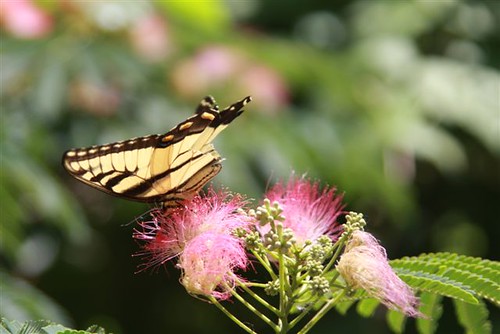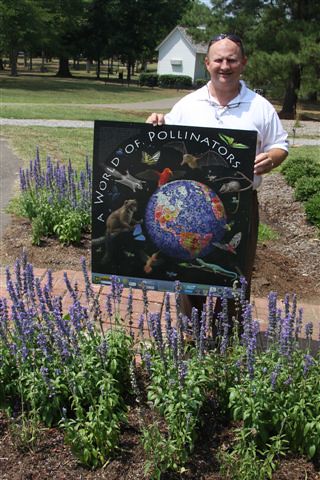
Along the lush banks of the Sunflower River, Steve Martens has a slice of paradise. The Madison, Miss. resident owns 1,600 acres of farmland and forests, hospitable not only to soybeans and corn, but also to whitetail deer and bobwhite quail.
But Martens is also buzzing about the success of another type of critter—pollinators. A wealth of butterflies and bees have benefited from the best management practices that Martens has implemented on his Sunflower County farm with the help of USDA’s Natural Resources Conservation Service (NRCS).
“My 6-year-old daughter loves it,” he says. “We ride through the native grasses, and the butterflies are everywhere. She loves to chase them.”

When Martens first enrolled in NRCS programs, in 2002, he was using the programs as a way to manage the boundary between his forests and his fields. The avid sportsman wanted to create great habitat, which included nectar corridors.
While Martens’ focus was on deer, he has learned the importance of planting native grasses, especially for the pollinators. Pollinators are responsible for the reproduction of 70 percent of flowering plants and two-thirds of crop plants.
As pollinators gather nectar and pollen for their survival, they also provide an ecological service that is worth $14.6 billion annually in the United States, quite a chunk of change for this diverse batch of insects, birds and mammals.
Unfortunately, many of the world’s pollinators are at risk. Studies have shown that about a third of managed honeybee colonies in the U.S. are lost each year, a trend that has held steady for the past five years. In addition, habitat loss, disease, parasites, and environmental contaminants have all contributed to the decline of many species of wild pollinators.
Martens has used the Environmental Quality Incentives Program (EQIP) and the Wildlife Habitat Incentives Program (WHIP) to improve pollinator habitat on his land.

Conservation came naturally to Martens. “My dad, Bill Martens, and grandfather, Steve Reed, instilled in me the values of conservation,” he says. “I’m an outdoors person, and I am willing to try any program as long as I can make it economically feasible. My goal is not to make money. Rather, I just want a great place to enjoy.”
Find out more about pollinators.
Check out more conservation stories on the USDA blog.
Follow NRCS on Twitter.
